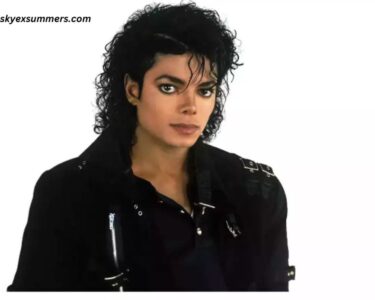Bad Bunny, born Benito Antonio Martínez Ocasio, is a Puerto Rican reggaeton and Latin trap artist who has taken the music world by storm. With hits that have dominated charts worldwide, he has become a household name not only in Latin America but also in the United States and beyond. As his popularity soared, many fans began to wonder about his linguistic abilities, particularly whether he speaks English. In this article, we will explore Bad Bunny’s language skills, his cultural background, and how language plays a significant role in his artistry and connection with fans.
The Rise of Bad Bunny
Bad Bunny’s journey to stardom began in 2017 with his breakthrough single “Soy Peor.” Since then, he has released multiple chart-topping albums, collaborated with high-profile artists, and even made history as the first all-Spanish-language album to hit No. 1 on the Billboard 200 with “YHLQMDLG.” His unique blend of reggaeton, trap, and Latin music, along with his charismatic persona, has garnered him a massive following.
Language in Bad Bunny’s Music
Primarily, Bad Bunny sings in Spanish, which is a deliberate choice that reflects his roots and connects him with his Latinx audience. His lyrics often explore themes of love, heartbreak, and social issues, resonating deeply with listeners who share similar cultural experiences. However, the question remains: does he speak English?
Bad Bunny’s Language Skills
Bad Bunny has mentioned in interviews that he does not speak English fluently. While he understands some English and can communicate basic ideas, he prefers to express himself in Spanish, especially when it comes to his music. This preference stems from a desire to stay authentic to his cultural identity and the message he wants to convey.
A Cultural Connection
Language is more than just a means of communication; it is a vessel of culture and identity. For Bad Bunny, singing in Spanish allows him to remain connected to his heritage and his fans in Latin America. He often emphasizes the importance of being proud of one’s roots, and using Spanish as his primary language reinforces that message.
Collaborations with English-Speaking Artists
Despite his limited English proficiency, Bad Bunny has collaborated with several English-speaking artists, showcasing his ability to bridge cultural gaps. Notable collaborations include “I Like It” with Cardi B and J Balvin, which topped the Billboard Hot 100, and “MIA” featuring Drake, which further solidified his status in the mainstream music scene. In these collaborations, Bad Bunny often delivers verses in Spanish, while his English-speaking counterparts contribute in English. This bilingual approach allows him to reach a wider audience without sacrificing his linguistic identity.
Language Barriers and Artistic Expression
Bad Bunny’s choice to sing primarily in Spanish also speaks to a broader cultural narrative. Many artists face pressure to conform to English-language norms to achieve commercial success. However, Bad Bunny’s rise challenges this notion, proving that there is a significant market for Spanish-language music in the U.S. and globally. His success encourages other Latin artists to embrace their language and culture without the need to compromise for mainstream acceptance.
Impact on His Fanbase
Bad Bunny’s use of Spanish resonates deeply with his fans, many of whom are proud of their Latinx heritage. His music often speaks to their experiences, struggles, and joys, making him a voice for a generation that values authenticity and cultural pride. This connection is essential, as it fosters a sense of community among his listeners, regardless of their location or language.
Engaging with Fans
Despite his limited English, Bad Bunny finds creative ways to engage with his non-Spanish-speaking fans. Social media platforms, especially Instagram and TikTok, serve as valuable tools for him to communicate and share insights into his life and music. Through captions, stories, and even video content, he bridges the language gap by using visuals and emotions that transcend words.
The Future of Bad Bunny’s Music
As Bad Bunny continues to evolve as an artist, the question of language will likely remain a focal point. He has expressed a willingness to learn English and improve his proficiency, which could open new avenues for his music and collaborations. However, it is essential to note that his linguistic choices are tied to his identity and artistic expression.
Staying Authentic
Should Bad Bunny decide to incorporate more English into his music, it will be crucial for him to remain authentic to his roots. Fans appreciate him for his unique voice and perspective, and any shift in language should not dilute the essence of his artistry. The challenge will be finding a balance between expanding his reach and staying true to his cultural identity.
The Broader Context of Language in Music
Bad Bunny’s situation reflects a larger trend in the music industry, where artists from diverse linguistic backgrounds are gaining prominence. Spanish-language music has experienced a renaissance, with artists like Rosalía, J Balvin, and Maluma also achieving significant success in the English-speaking market. This shift signifies a growing acceptance of multilingualism in music and highlights the importance of cultural representation.
The Power of Representation
Having artists like Bad Bunny in the spotlight fosters a greater appreciation for diversity in music. It encourages listeners to explore different languages and cultures, breaking down barriers that have historically existed in the industry. For many fans, discovering music in another language can be a transformative experience, enriching their understanding of different cultures and perspectives.
Conclusion
In summary, while Bad Bunny may not speak English fluently, his choice to communicate primarily in Spanish reflects his commitment to authenticity and cultural pride. His success story serves as an inspiration for aspiring artists and reinforces the idea that embracing one’s roots can lead to global recognition. As he continues to evolve, the balance between language, culture, and artistry will remain a vital aspect of his journey. For now, Bad Bunny stands as a testament to the power of music to transcend language barriers and connect people from all walks of life. Whether you’re a Spanish speaker or not, his music invites everyone to join in and feel the rhythm of his world.



